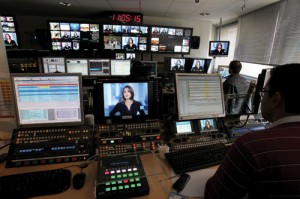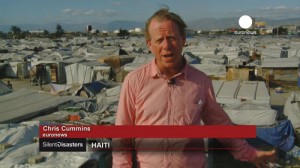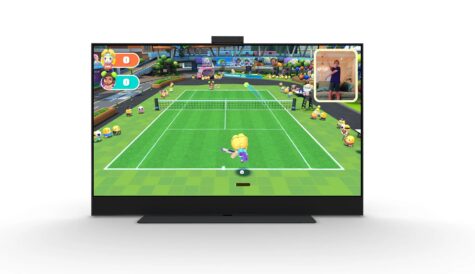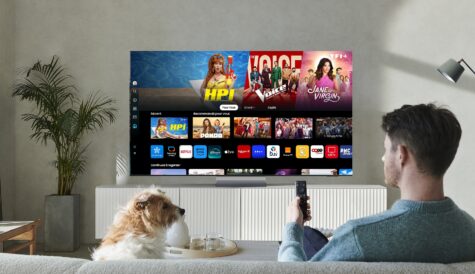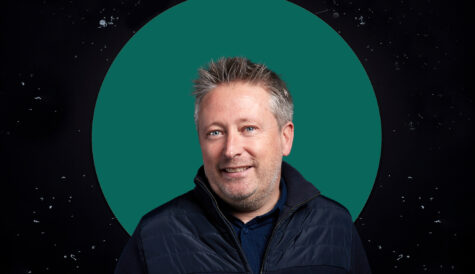News on the move – the changing face of TV news channels
News channels, perhaps more than any other, are at the forefront of changes in media consumption. Andy Fry looks at how they are adapting.
Running any TV channel in an era of digital fragmentation is difficult. But running a news-based channel brings with it a unique set of challenges. The first is the need for immediacy.
The very nature of news means that media owners in this space must be able to source stories fast and then deliver them to audiences across all available platforms. In news, online and mobile platforms are not an optional extra but a core part of any news operation.
Next up is what to do when the news is dull. News channels realise they are not just in competition with other news channels, but with all channels, and need a schedule that is rich enough to hold viewers between bulletins and at times when the news agenda drags.
Finally, there’s the question of funding. The market is split between channels that are expected to be self-reliant and those that are publicly supported. Where they sit influences their approach to carriage deals, advertising strategy, content syndication and the investments they make in editorial.
At UK public broadcaster the BBC, a new news studio has been built to help meet such challenges. It will house all UK-based BBC news journalists, regardless of what platform or part of the world their output is destined for. “We’re in pursuit of genuine convergence,” says Jim Egan, chief operating officer of BBC Global News, the division that runs BBC World News and bbc.com/news, the BBC’s commercially funded international news platforms. “Today we have clear guidelines at correspondent level regarding the order stories are filed across platforms, starting with a 140-word quick fire message that can be use on Twitter or via SMS. Digital, TV and radio teams sit in proximity to each other to aid story-sharing.” For Egan, this approach is not so much about innovation as working in a smarter way. “BBC News used to be in many media but it wasn’t really multimedia. And it didn’t really make the best use of local experts around the world. Now there’s a much more bi-directional relationship between the centre and these multilingual journalists who are well-known in their home countries.”
Distribution footprint
This sense of global connectedness is one of the reasons that BBC World News continues to grow its distribution footprint, explains Egan. With a headline figure of 350 million homes, the channel has added around 60 million in the last 18 months. Much of the growth has been the US. Elsewhere, the increase is caused by a mix of drilling down deeper into existing markets and adding new territories. In Europe, the channel’s headline distribution has risen by 15%, with France a strong story, up 119%.
Most of the major news providers are accused at some point of being geo-politically skewed towards their home market. But Egan says BBC World News has worked hard to counteract that: “British may be in the BBC brand but this channel is an explicitly global proposition that seeks to address the global agenda.” Support for Egan’s claims comes from the channel’s strong growth in Africa. Recent research (EMS) shows that BBC World News reaches more than half (50.2%) of affluent Africans every month, while bbc.com reaches 4.6 million unique users per month in the Middle East and Africa, according to ComScore. Egan puts that down to significant and sustained investment in the region. Currently there are correspondents in 48 African countries as well as a new show called Focus on Africa, BBC World News’ first-ever daily TV news programme in English for African audiences.
BBC World News/bbc.com is one of the news providers that has to make money. “It’s profitable. Revenues split evenly between pay TV, TV advertising and digital advertising,” says Egan. He doesn’t expect to see a huge change in that, “though the composition within digital may change, with mobile advertising growing faster than PC-based ads”. [icitspot id=”45461″ template=”box-story”]
The importance of advertising explains why distribution beyond the 24/7 pay TV channel is important. “Branded blocks and content syndication are important, so we have deals with the like of TV4 Sweden, ABC Australia, TV New Zealand and Disney’s Dlife in Japan,” says Egan. Another priority is out-of-home viewing in hotels, cruise ships and airlines, which represents between 10-25% viewing depending on the market. Airlines are also an exciting market, says Egan.
Cross-platform
CNN faces many of the same issues as BBC World News. One of them is the suggestion that it is US-centric in its editorial positioning – despite the fact CNN International has been divided up into five regional feeds since 1997. Chris Press, director of business development, CNN International, cites the channel’s performance on the 2012 EMS Middle East Survey in defence. According to the survey, the channel’s monthly reach of 33.4% was more than double its nearest English language competitor – Al Jazeera English. “Being independent and impartial is in our DNA,” he says. “It’s incredibly important to us that we are not beholden to any editorial viewpoint.”
CNN has a similar size of distribution to BBC World News – 100 million in the US, 265 million international. But like all its news rivals it is keen to make itself available across platforms. “TV is our biggest cash cow, but we want to be available via as many avenues as possible,” says Press. Figures that back up CNN’s efforts include the fact that cnn.com achieved an average of 92 million global video starts per month during 2012. Other headline statistics that illustrate the brand’s expansion include 40 million Twitter followers, 11 million Facebook fans and 21.2 million unique users per month for mobile network CNN Digital. CNN Apps for iPad, iPhone, Android, Windows, Kindle Fire, Nook now total 28 million downloads – 12 million in 2012.
This isn’t just important for audiences, but also for advertisers, says CNN International sales director Guy Abbott. “It’s really important for a news organisation to be accessible and add value on these new platforms. What it gives us from an ad sales perspective is more sophisticated offering. In addition to the global and pan-regional platform provided by the TV channel, digital gives us the flexibility to provide more regionality and interactivity.”
A case in point was a link up with South African Tourism, which encouraged viewers to upload photos and stories that encapsulated their experiences of South Africa through a website, My South Africa. One area where news providers do have an advantage in cross-platform is that “we own a lot of our own content,” says Press. “The fact that CNN owns long-form programming and archive footage is a key advantage for the VOD and interactive side of our business.” Content ownership also means CNN is a strong player in the business-to-business provision of news. “CNN Newsource supplies broadcasters with content. Looking ahead I see business-to-business as an opportunity because we have such a formidable newsgathering operation.” An example is a deal with new Bulgarian channel News7 where CNN International will provide video and newsgathering resources and “consultancy, training and operational support for the channel’s launch phase and beyond”.
Business model
In terms of business model (carriage fees plus advertising), the other comparable broadcaster to BBC World News and CNN is Euronews. Founded by the EBU in 1992, the channel has gone through a number of changes and is now owned by 21 public broadcasters. Of these, the big four shareholders are France Télévisions (23.93%), RAI Italy (21.54%), RTR Russia (15.98%) and TRT Turkey (15.70%), which came on board three years ago. According to Arnaud Verlhac, worldwide distribution director, the channel is experiencing strong distribution growth, rising from around 350 million to 400 million homes in the last year. Increased distribution is coming from a mix of new platform and new market developments. “We are focusing on protecting our business in EMEA while expanding into the Americas and South East Asia,” says Verlhac. “We have a presence on the Du platform in Dubai, the Roku platform in the US and UK and an IPTV platform in Thailand. We also have deals with 95% of Smart TV manufacturers and are part of the TV Everywhere initiative from Belgacom TV.” Also significant was a brace of deals in Spain, which unlock part-time distribution via DTT.
Editorially, the Euronews model is much simpler than that of the CNN or BBC because it doesn’t use anchors or talking heads, focusing instead on video footage with a language track laid on top. Olivier de Montchenu, Euronews worldwide sales and marketing director, says this format gives the channel two advantages. “The first is that it can use a wider range of languages – 13 are currently available. Not everyone is at ease watching the news in English so this is a way of reaching a wider audience. It also gives us more of a sense of being neutral.”
The second is that the format is easy to translate across platforms, says de Montchenu. “The way people consume news of Euronews is the same way they consume it on other platforms. This has enabled us to adapt for other platforms.”
Echoing CNN’s advance in Bulgaria, Euronews is also helping less well-resourced broadcasters deliver a sustainable news operation. In November, Romanian public broadcaster TVR did a deal which will see Euronews provide 80% of the content to its thematic channel TVR Info, to be renamed TVR News.
International footprint
Of other commercially focused news channels, BSkyB’s Sky News has extended its international footprint in the last year. Examples include the launch of the network in Singapore, Malaysia and on Livestation. The latter deal means the channel is available in the US and Canada for the first time, for US$2.99 (e2.22) a month. The biggest story of the year, however, was the launch of sister channel Sky News Arabia, a 24-hour Arabic language multi-platform service.
As for the main channel, a spokesperson says that it “aims to attract anyone who has an interest in news whatever their age, income or interests”. In terms of classic distribution, Sky News reaches 106 million homes across 120 countries and claims that “more people in Europe watch it every day than any other international news channel”.
Sky News, which relaunched its website during the year, also continues to push out across non-standard platforms. “Digital services reach 4.6 million per month on Sky News platforms and at least 13.7 million when taking into account Yahoo and Orange mobile,” says the spokesperson. “Sky News has apps across all operating systems – most recently for Windows 8. Sky News applications have been downloaded 7.5 million times.”
Other key stats include the fact that skynewsbreak now has 780,000 followers on Twitter and Sky News is available in London taxi cabs and on Heathrow Express. “Our biggest audience in a single moment is on radio with seven million listeners tuning into Sky content on 300 commercial radio stations at 0800 each day,” says the spokesperson.
Advertising is a key revenue stream, and there has also been some exploration of paid-for content: “Sky News for iPad launched in March 2011. It is a premium service free to Sky Customers, but non-Sky customers are charged a fee. Likewise Sky News HD is a premium product only available on the Sky platform,” says the spokesperson.
Publicly-funded
While the above channels are all expected to be self-reliant, they face competition from channels that are funded by countries that want to have their own voice heard. The top examples are France24, Al Jazeera and Russia Today. All are expected to operate efficiently and, to a degree, generate commercial revenues. But being funded by public money means that they don’t have to pay as much attention to carriage fee negotiations, since their primary goal is to secure the widest possible distribution. Likewise, they don’t have to let existing business relationships in TV limit their expansion into multimedia. Al Jazeera, has been much more relaxed than CNN International about the provision of live content outside the traditional TV channel space.
“We are a much younger brand than CNN and the BBC, but we are very pleased with the level of distribution we have achieved.” Jean-Yves Bonsergent, France 24
At France24, which receives 90% of its funding from the French government, head of strategy and international business development Jean Yves Bonsergent believes his network has made great strides since launching six years ago: “We are a much younger brand than CNN and the BBC, but we are very pleased with the level of distribution we have achieved.” The headline figure for France24 is 260 million homes, of which 206 million are 24/7 full-time distribution. “That actually covers three separate language services,” says Bonsergent. France24 English is in 173 million homes, France 24 French is in 145 million homes and France24 Arabic is in 96 million homes. These figures add up to more than 260 million because of overlap between the three services. Of the 206 million total already mentioned, 133 million homes are in Europe.
Europe is a big priority “but competitive” says Bonsergent. “For this reason we are trying to create a distinctive feel to our channels. In the case of France 24 English, we are making the most of Paris as a backdrop to the channel, so that it looks like an editorial alternative to CNN, the BBC and EuroNews.”
Areas where France 24 is making real inroads include the Middle East and French-speaking Africa. “People like the objective vision we bring,” says Bonsergent, “but they also like having a service in their own language. It gives us legitimacy.”
In terms of expansion, Asia is a priority, though Japan and China are difficult to enter. There is also a concerted effort to position France24 through new media. For the most part, the strategy is to get the three channels onto basic platforms. But an exception might be when one of the services can be used to cater for a particular target group. “An example could be the French diaspora in the US, which might be willing to pay a few dollars a month for the French service. Otherwise the strategy is to build enough critical mass in audience for us to improve our appeal to advertising agencies,” says Bonsergent.
RT (aka Russia Today) is funded in a similar way to Al Jazeera and France24 and has various versions (Arabic, Spanish, English, a dedicated US channel and a documentary channel). Like these rivals it has prioritised distribution and reckons to have an audience of “more than 530 million viewers worldwide, including 85 million in the US alone”. It also claims to be the first TV news channel in the world to pass 750 million views on YouTube.
Over-riding agenda
Al Jazeera’s model is not so very different to that of France24, with its funding coming ultimately from the state of Qatar. In simple terms, this means that the over-riding agenda, at least in the short term, is to expand distribution in any way possible, rather than focusing on how to generate a commercial return.
“We would like to generate revenues,” says Taahir Hozook, a member of the distribution department whose focus is on new platform development, “but our number one priority is to deliver the Al Jazeera service to the end user across as many platforms as possible at the lowest cost we can. For this reason, we have stayed away from paid models – PPV, pay per story etc. We do take advertising on the TV channel but we are not comfortable with sponsored programming or branded content.”
Al Jazeera has an English and an Arabic language service as well as a service targeted at the Balkans. Coming soon is a Turkish service and there are reports that Al Jazeera is considering Spanish and Urdu services. Most intriguing is the recent acquisition of Current TV for US$500 million. The plan is to turn Current into a dedicated US network called Al Jazeera America – however what that means exactly is yet to be revealed. “It’s too early to give details,” says Hozook, “but the acquisition is an important step for us in terms of targeting the US market.”
As explained above, Al Jazeera has made digital distribution a priority. Derrick Fountain, from the channel’s new media division, says mobile has been a big priority in the past year with “a number of strong partnerships being formed with handset manufacturers like Samsung, Nokia and HTC. Our content is also available on the Flipboard App, because we see that as a useful way of driving awareness of our services.”
According to Fountain, Al Jazeera is doing a lot of work on understanding how people consume news, both in terms of internal research and watching ratings and reviews of Al Jazeera Apps. This is then informing the way Al Jazeera builds out its services. For example, “we see a lot of people looking for news within social media and then going to other places to validate it – so it has been important for us to build social features into our service and make sure we are engaging with audiences.”
Having said all this, he’s also conscious that not all territories have the same level of technical sophistication as the US and Western Europe. Given that Al Jazeera wants to achieve the widest possible distribution, this means it is “doing everything from smartphones and connected TV to low-end handsets. We’ve just done some work around the Ghana elections using IVR (Interactive Voice Response), allowing local people to inform us about their experiences. It’s an innovative way to reach the less commercially-developed markets.”

